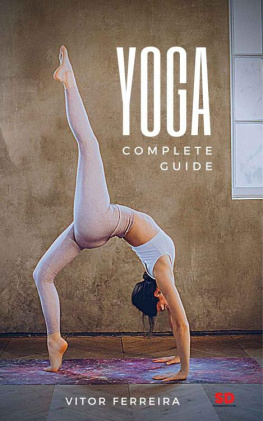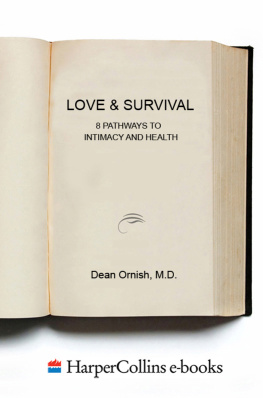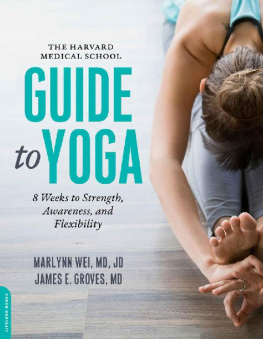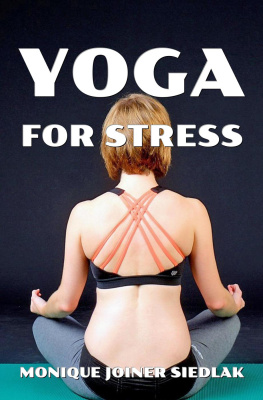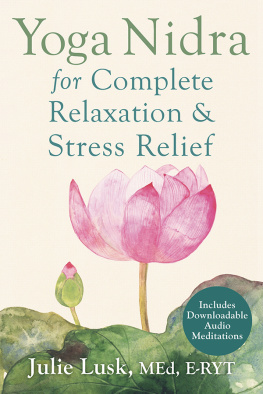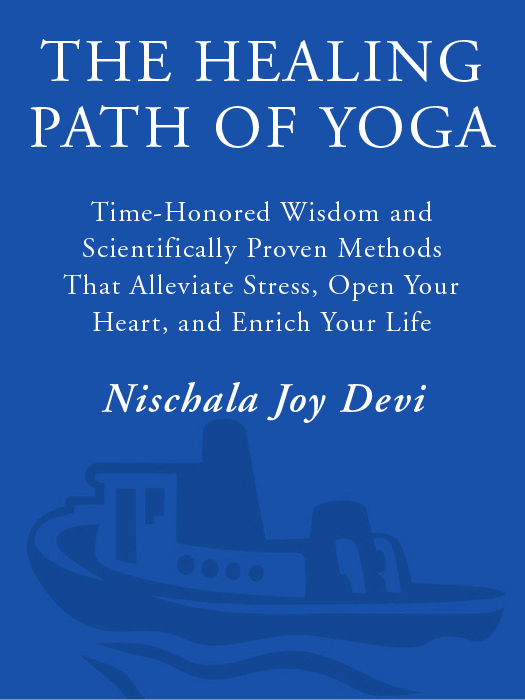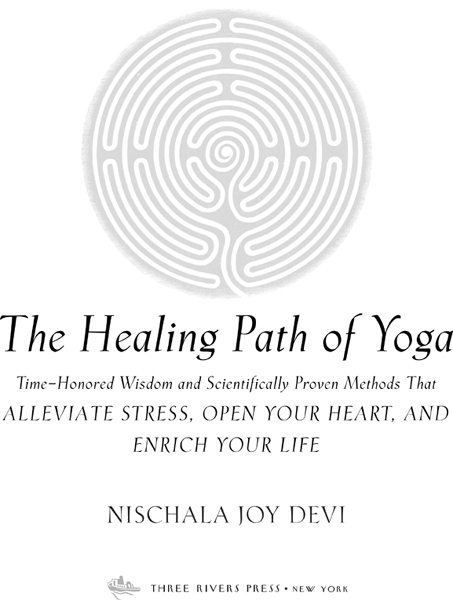The information in this book is not intended as a substitute for the advice of physicians or other qualified health professionals. It is not intended to be prescriptive with reference to any specific ailment or condition or to the general health of the reader, but, rather, descriptive of one approach to fostering health and wellness. The reader is advised to consult with his or her physician before undertaking any of the practices contained in this book. The reader should also continue to consult regularly with his or her physician in matters relating to his or her health, particularly in respect to any symptoms that may require diagnosis or medical treatment. Neither the author nor the publisher shall be liable or responsible for any loss, injury, or damage allegedly arising from the use of any information contained in this book.
A CKNOWLEDGMENTS
T HE H EALING P ATH OF Y OGA is an open-ended journey that began long before I knew there would ever be a book of that name. The courage to even tread on this glorious path was nourished at first by my two remarkable parents, who believed with their whole hearts that I was the greatest blessing in their lives. With their gentle guidance and love they allowed me to be the person I have become. I am sure they are now the ever-present angels guiding me through life.
To my earth angel, the love of my life, best friend, and playmate, Bhaskar Deva, who makes everything in my life more joyous and fun. Even during my tenth rewrite of a chapter his love for me made me smile.
I have been very blessed in my life to have had loving guidance from many people. I know they rejoice with me that this book is now available.
I am forever grateful for the years of insight and guidance into the teachings and practices of yoga that I received from my guru, Sri Swami Satchidananda.
To Dean Ornish, M.D., for believing that a Yoga-based program could reverse heart disease and for taking the time from his extremely busy schedule to write the foreword.
Thanks to Michael Lerner, Ph.D., and the Commonweal Cancer Help Team for the experience and knowledge that I gained in developing and serving that great program.
I learned so much from the members of my clinical team at the Preventive Medicine Research Institute, who patiently listened to my concerns about the physical and subtle bodies not being included in their vast traditional medical training.
All the problem-solving done with yoga teachers, who were teaching people with life-threatening diseases, stocked my mental files, encouraging me to be very creative in my advice.
To my dear friends and cheering section: Gwynn Sullivan; Swamis Vidyananda, Ramananda; Vajra Matasow; Kevin Cates; Lakshmi Fjord, Janet Whitman, and Bill Bilawa, who were among the many people who said, You should write a book. Especially to Julie Lusk, who not only said it to me, but to her agent, who responded, I love it, lets publish it! This was the beginning of my dream team. Combining the skills, love, encouragement, and guidance of my agent, Loretta Barrett, and editor, Shaye Areheart, was like heart and heartbeat. To both of them and their great teams, who skillfully soothed my apprehensions on more than one occasion, for producing a beautiful and inspiring book.
To Kacie Woodard for the preliminary drawings and to Cassi Stish for her grace and skill in excecuting real people drawings. To Sabina Vogt for the photos and flexibility.
To my dear editor friends, Radihka Miller and Prakash Shakti Capen, whose velvet fingers helped to edit and transform unfinished sentences into readable thoughts.
To my sweet and patient friends Robin Gueth, for her copywriting and publicity tips; Debra Kesten who answered Publishing 101 questions; Jeffrey Kroeber, and Richard Fairbanks for endless help, patience, and mercy for the technically impaired.
To my in-laws, Ronald and Beverly Gross, Dayle, Ken, Emily, and Jordan Myers and Mark Gross, whose love and support of me exemplify the benefits of yoga and change in-law to in-love.
I give a deep and heartfelt bow to all the people with heart disease and other life-threatening diseases who taught me about the healing power of love and compassion. And to those who whispered in my heart, Tell my story, I thank you for the inspiration.
I bow to those who were courageous enough to try almost anything to help themselves heal. Because of your courage, so much was learned that is now benefiting not just a few but many. I thank you and they thank you.
All who cheered me on and believed in me: If I have not mentioned your name, forgive me, you are always in my heart.
C ONTENTS
F OREWORD
FOR THE PAST TWENTY-THREE YEARS, my colleagues and I have conducted a series of cardiovascular studies demonstrating, for the first time, that the progression of even severe coronary heart disease often can be slowed, stopped, or even reversed by a program of comprehensive lifestyle changes, without coronary bypass surgery, angioplasty, or a lifetime of cholesterol-lowering drugs. These lifestyle changes include a very low-fat, whole-food vegetarian diet, stress management techniques, moderate exercise, smoking cessation, and psychosocial support. This was a radical idea when I began my first study; now, it has become mainstream and is generally accepted as true by most cardiologists and scientists.
I have studied yoga since 1972 with Sri Swami Satchidananda, an eminent and ecumenical spiritual teacher and yoga master. Indeed, the stress management techniques that are an important part of the program are derived in large part from the yoga and meditation practices that I learned from him.
One of my colleagues has been Nischala Devi. I first began working with her in 1986 at the beginning of the Lifestyle Heart Trial. At that time, she was in charge of teacher training for the Satchidananda Ashram. Along with Sandra McLanahan, M.D., she became one of the primary initial instructors for our research participants and at our weeklong residential retreats.
One of the most important lessons I learned from Swami Satchidananda was to always ask: What is the cause? And what is the cause of that? And so on. The theme of all of our work is simple: If we do not treat the underlying causes of a problem, then the same problem may recur, new problems may emerge, or we may be faced with painful choices. This is like mopping up the floor around an overflowing sink without also turning off the faucet.
Within a few weeks after making comprehensive lifestyle changes, the patients in our research reported a 91-percent average reduction in the frequency of angina. Most of the patients became essentially pain free, including those who had been unable to work or engage in daily activities due to severe chest pain. Within a month, we measured increased blood flow to the heart and improvements in the hearts ability to pump. And within a year, even severely blocked coronary arteries began to improve in 82 percent of the patients.
These research findings were published in the most well-respected peer-reviewed medical journals, including the Journal of the American Medical Association, The Lancet, Circulation, The New England Journal of Medicine, The American Journal of Cardiology


